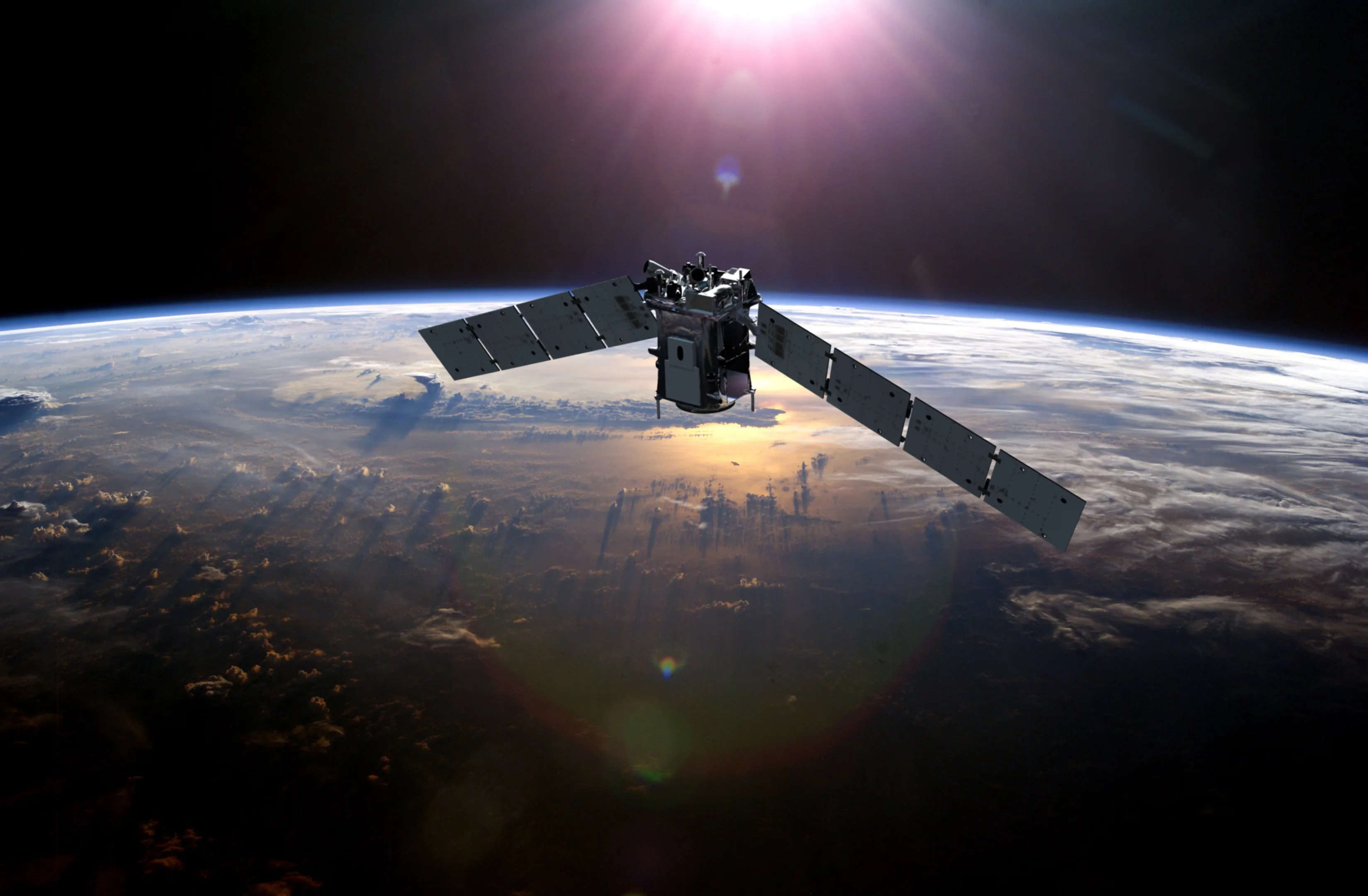NEW DELHI: An active Nasa spacecraft narrowly avoided a collision with an inactive Russian satellite in low Earth orbit.
The close encounter between Nasa’s Thermosphere Ionosphere Mesosphere Energetics and Dynamics (TIMED) mission spacecraft and the Russian Cosmos 2221 satellite was predicted to occur at around 1:30am EST on February 28, at an altitude of about 373 miles (600 kilometers), according to a Nasa statement released just an hour before the event.
The collision of these non-maneuverable satellites could have resulted in significant debris generation, endangering not only Nasa’s satellite, which studies the sun’s effects on Earth’s atmosphere, but also initiating a potentially disastrous chain reaction with other orbiting objects.
“A collision could result in significant debris generation,” said Nasa and the Department of Defense representatives.
This potential chain reaction of satellite debris in low Earth orbit, known as the Kessler syndrome, could be catastrophic and has been a growing concern among scientists due to the increasing amount of satellites and space debris. The Department of Defense currently tracks the 30,000 largest pieces of debris, but countless smaller fragments remain untracked and pose risks to satellites and the International Space Station.
Efforts to address the space junk problem include Australian scientists proposing a method to remove smaller debris using a laser and the European Space Agency (ESA) planning to launch a robot in 2025 to collect space junk. ESA’s director general, Jan Wörner, has advocated for new regulations requiring entities that launch satellites to clean up their space debris.
How space debris impacts satellite operations?
Collision risk: The most direct impact is the risk of collisions with operational satellites. Even small pieces of debris, traveling at high speeds in orbit, can cause catastrophic damage to satellites, leading to loss of functionality or complete destruction.
Maneuvering and fuel consumption: To avoid potential collisions, satellites often have to perform avoidance maneuvers, which can consume valuable fuel, shorten their operational lifespans, and disrupt normal operations and data collection.
Design and cost: The threat of debris necessitates more robust satellite designs to withstand impacts, leading to increased costs in manufacturing, testing, and launching satellites.
Orbital slots: Space debris can clutter popular and useful orbital paths, making them less accessible or increasing the risk for satellites operating within those paths.
Long-term sustainability: Increasing amounts of space debris could lead to the Kessler Syndrome, a scenario where the density of objects in low Earth orbit is high enough that collisions between objects could cause a cascade of collisions. This would exacerbate the debris problem and could render some orbital regions unusable for generations.
Communication interference: Although less common than physical impacts, debris can also interfere with the signals to and from satellites, affecting data transmission and operational control.
Insurance and liability: The increased risk from space debris can lead to higher insurance costs for satellite operations and complex liability issues in the case of collisions involving active satellites.
The close encounter between Nasa’s Thermosphere Ionosphere Mesosphere Energetics and Dynamics (TIMED) mission spacecraft and the Russian Cosmos 2221 satellite was predicted to occur at around 1:30am EST on February 28, at an altitude of about 373 miles (600 kilometers), according to a Nasa statement released just an hour before the event.
The collision of these non-maneuverable satellites could have resulted in significant debris generation, endangering not only Nasa’s satellite, which studies the sun’s effects on Earth’s atmosphere, but also initiating a potentially disastrous chain reaction with other orbiting objects.
“A collision could result in significant debris generation,” said Nasa and the Department of Defense representatives.
This potential chain reaction of satellite debris in low Earth orbit, known as the Kessler syndrome, could be catastrophic and has been a growing concern among scientists due to the increasing amount of satellites and space debris. The Department of Defense currently tracks the 30,000 largest pieces of debris, but countless smaller fragments remain untracked and pose risks to satellites and the International Space Station.
Efforts to address the space junk problem include Australian scientists proposing a method to remove smaller debris using a laser and the European Space Agency (ESA) planning to launch a robot in 2025 to collect space junk. ESA’s director general, Jan Wörner, has advocated for new regulations requiring entities that launch satellites to clean up their space debris.
How space debris impacts satellite operations?
Collision risk: The most direct impact is the risk of collisions with operational satellites. Even small pieces of debris, traveling at high speeds in orbit, can cause catastrophic damage to satellites, leading to loss of functionality or complete destruction.
Maneuvering and fuel consumption: To avoid potential collisions, satellites often have to perform avoidance maneuvers, which can consume valuable fuel, shorten their operational lifespans, and disrupt normal operations and data collection.
Design and cost: The threat of debris necessitates more robust satellite designs to withstand impacts, leading to increased costs in manufacturing, testing, and launching satellites.
Orbital slots: Space debris can clutter popular and useful orbital paths, making them less accessible or increasing the risk for satellites operating within those paths.
Long-term sustainability: Increasing amounts of space debris could lead to the Kessler Syndrome, a scenario where the density of objects in low Earth orbit is high enough that collisions between objects could cause a cascade of collisions. This would exacerbate the debris problem and could render some orbital regions unusable for generations.
Communication interference: Although less common than physical impacts, debris can also interfere with the signals to and from satellites, affecting data transmission and operational control.
Insurance and liability: The increased risk from space debris can lead to higher insurance costs for satellite operations and complex liability issues in the case of collisions involving active satellites.


